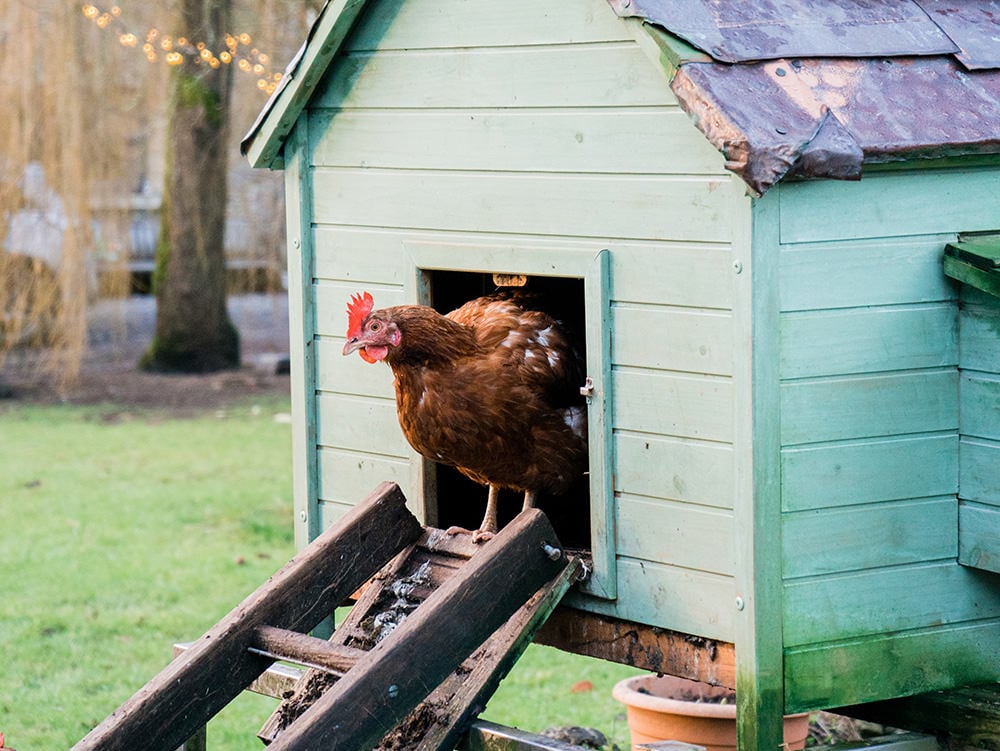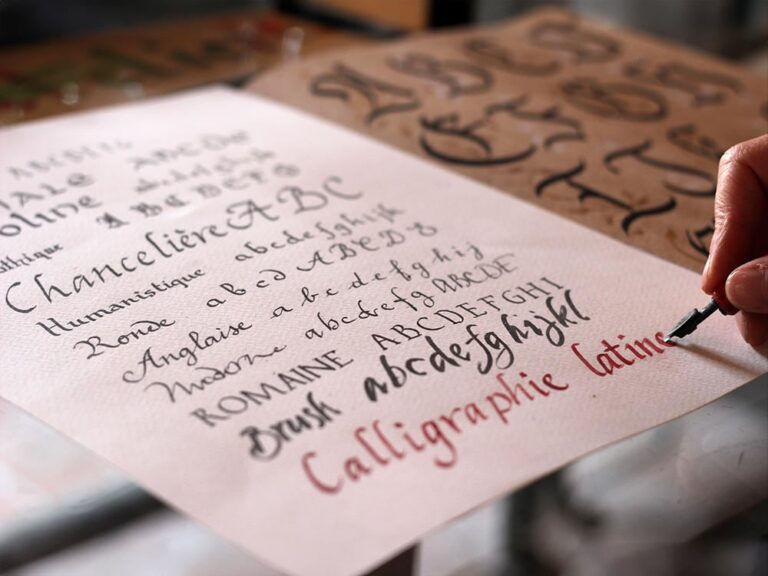Cote, coter, coté, côte & côté
Some words in French have almost identical spellings, but are actually different words with different meanings. Remember that accents are an important part of correct spelling in French. Accents are not optional extras. They are an integral part of the spelling of each word.
A homonym is a word that sounds identical to another word, but is spelled differently. Cote and côte are one set of homonyms, because they are pronounced identically (roughly like the English word “coat”). Coter, coté and côté are another set, because this second set is also pronounced identically to each other (pronounced like “KOH TAY”).
cote (Noun or Verb)
The term “la cote” is a feminine noun, primarily used to describe a shelter for animals, particularly for poultry or sheep. In this sense, it corresponds to the English word “coop” or “shelter.” Its usage is mainly restricted to farming and agriculture contexts.
Examples:
- Les poules se réfugient dans la cote pendant la nuit. (The hens take refuge in the coop during the night.)
- Le berger a construit une cote pour ses moutons. (The shepherd built a shelter for his sheep.)
Etymology of the noun “la cote”:
The origin of “la cote” can be traced back to the Latin word “cota,” meaning a coat or covering. Over time, it evolved to refer to the animal shelter, denoting a protective covering for animals.
Conjugated Form of the Verb “Coter”:
As a verb, “coter” means “to rate” or “to quote” in English. It is used to assess or evaluate something based on a specific scale or criteria.
Examples:
- Les juges vont coter les performances des candidats. (The judges will rate the candidates’ performances.)
- Vous pouvez coter les articles en fonction de leur qualité. (You can quote the articles based on their quality.)
- a. J’ai coté ce film comme étant l’un des meilleurs de l’année. (I rated this movie as one of the best of the year.)
- Le professeur a coté les devoirs des élèves selon leur performance. (The teacher graded the students’ assignments based on their performance.)
- Cette évaluation est cotée sur 100 points. (This evaluation is graded on a scale of 100 points.)
Etymology of the verb “coter”:
The verb “coter” has its origins in the Latin word “quotare,” which meant “to count” or “to estimate.” Over time, “quotare” evolved into “coter” in Old French, and the past participle “coté” emerged, retaining its original meaning of assessing or grading something.
la côte
The word “la côte” is another feminine noun whose primary meaning is “coast” in English. It refers to the region where land meets the sea, typically characterized by sandy beaches, cliffs, or other geographical features along the shoreline.
The word “la côte” also means “rib” in English. It refers to the curved bones that form the ribcage in humans and animals, enclosing and protecting vital organs such as the heart and lungs. The term “la côte” is a feminine noun and is commonly used in medical and anatomical contexts to describe the bones that contribute to the structure and support of the chest area.
Examples:
- Nous avons passé nos vacances sur la côte atlantique. (We spent our vacation on the Atlantic coast.)
- La côte d’Azur est célèbre pour ses plages magnifiques. (The French Riviera is famous for its stunning beaches.)
- Anatomical Description: Les côtes humaines forment une solide cage thoracique. (The human ribs form a sturdy ribcage.)
- Medical Terminology: Le médecin a détecté une fracture de côte suite à l’accident. (The doctor diagnosed a rib fracture as a result of the accident.)
- Culinary Use: Ce plat est préparé avec des côtes de porc savoureuses. (This dish is prepared with flavorful pork ribs.)
- Idiomatic Expression: Elle prend toujours ses amis sous sa côte, elle est très protectrice. (She always takes her friends under her rib, she is very protective.)
- Comparative Anatomy: Chez certains animaux, comme les reptiles, les côtes sont plus rigides que chez les mammifères. (In some animals, like reptiles, the ribs are more rigid than in mammals.)
- Posture and Breathing: Le yoga encourage une respiration profonde qui étire les côtes et les poumons. (Yoga encourages deep breathing that stretches the ribs and lungs.)
- Medical Diagnosis: La douleur sous la côte gauche peut être liée à des problèmes gastriques. (Pain under the left rib can be related to gastric issues.)
Etymology:
“Côte” can be traced back to the Latin word “costa,” which also meant “coast” or “shore.” Its usage in French retained the original sense, referring to the coastal areas.
The etymology of the French word “côte” meaning “rib” can also be traced back to its Latin root “costa.” In Latin, “costa” also meant “rib” and served as the basis for several Romance languages, including Old French, to adopt the term with similar meanings.
During the development of the French language, which emerged from Vulgar Latin in the 9th century, “costa” evolved into “coste” in Old French. Over time, the final “e” in “coste” was dropped, leading to the modern form “côte.”
The transition from “costa” to “côte” reflects common linguistic shifts that occurred during the evolution of Romance languages. The change in pronunciation and the simplification of word endings are typical features of language development over centuries.
The use of “côte” to refer to the curved bones forming the ribcage in humans and animals dates back to Middle French (14th to 17th centuries). The term’s adoption in the context of anatomy and medicine solidified over time, aligning with advances in medical understanding during the Renaissance and beyond.
le côté
As a masculine noun, “côté” translates to “side” or “aspect” in English. It is used to indicate a particular side or direction, either physically or metaphorically, or to refer to a specific aspect of a situation or topic.
Examples:
- Je préfère m’asseoir du côté droit du théâtre. (I prefer to sit on the right side of the theater.)
- Du côté des finances, tout est en ordre. (On the financial side, everything is in order.)
Etymology:
The French word “le côté” refers to “the side” in English, and its etymology can be traced back to Latin and Old French influences.
The term “côté” has its roots in the Latin word “costa,” which originally meant “rib” or “side.” In Latin, “costa” was used both to refer to the ribs in the human body and to denote the concept of “side” or “flank.”
During the transition from Latin to Old French, the word “costa” evolved into “coste” with the same dual meaning, encompassing both “rib” and “side.” The sense of “side” became more dominant over time, and the term was used to indicate a specific direction or aspect of something.
By the time Middle French emerged (14th to 17th centuries), “coste” had transformed into “côte,” maintaining its primary meaning of “side.” It was further specified by the definite article “le,” forming “le côté” or “the side.”
Throughout its linguistic journey, “le côté” expanded in usage beyond its anatomical origin to encompass various contexts. It could refer to a physical side of an object, a figurative aspect of a situation, or even a personal disposition or preference. For example, “le côté gauche” translates to “the left side,” “le côté positif” means “the positive aspect,” and “le côté amical” signifies “the friendly side.”






